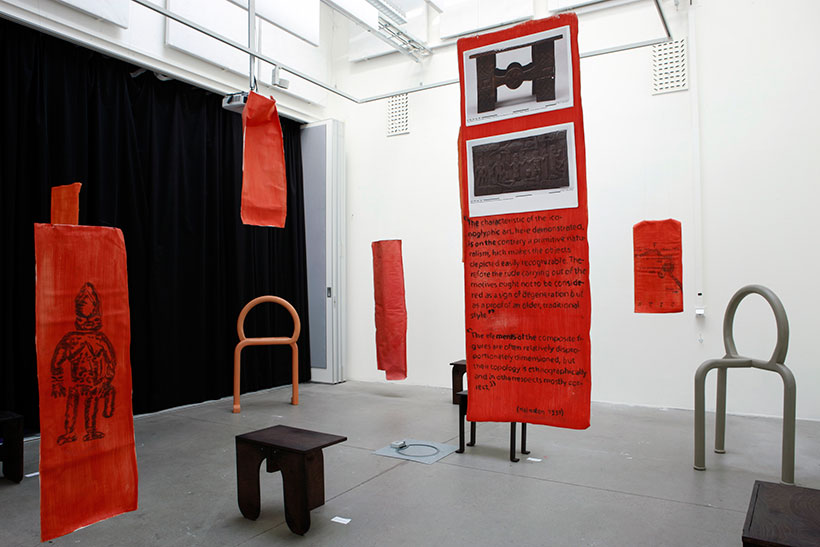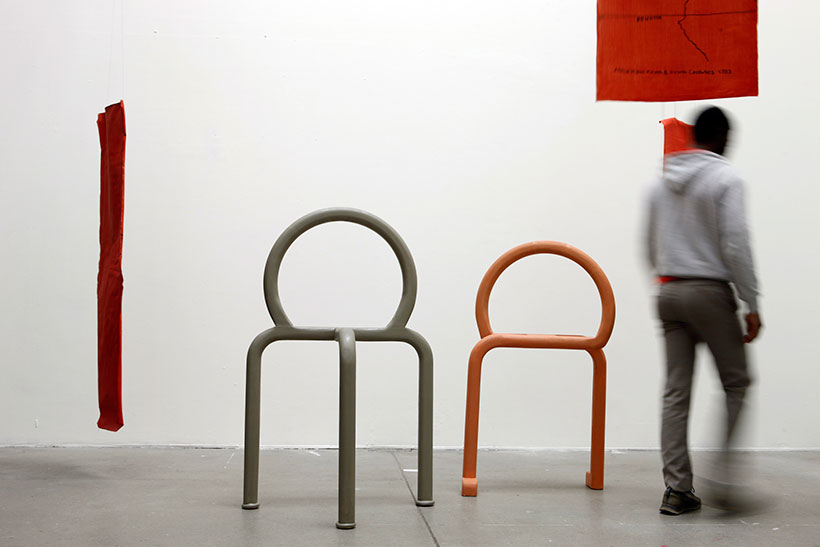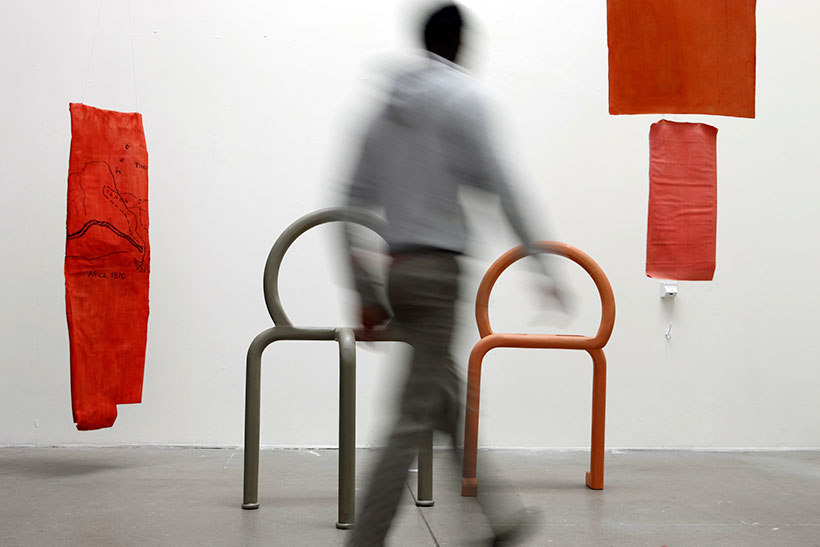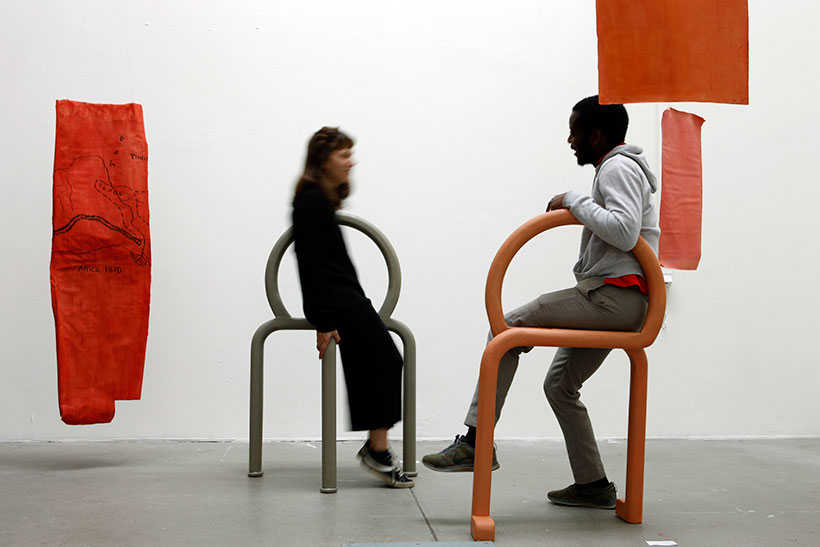

scenography (Photo: Sandra Vitaljic)

scenography (Photo: Sandra Vitaljic)

the family (Photo: Sandra Vitaljic)

fetishes (Photo: Sandra Vitaljic)

fetishes (Photo: Sandra Vitaljic)

fetishes (Photo: Sandra Vitaljic)
As a Swedish spatial practitioner from the ‘African Diaspora’, the questions of how design participates in the creation of the European ‘Other’ (non-Europeans) and what is the relation between aesthetics and race, are at the core of my degree project. To study these questions, I have centered my degree project around a stool from Benin City, Nigeria that can be found in Stockholm’s Museum of Ethnography.
The object came to the collection in 1907. How was it made? How was it used? How did it come to the collection? By analysing form and contextual history, we might get insight into how European notions of being have been brought outward as the only mode of being and knowing. The aim is to advance knowledge about ‘African Design’ and ‘African spatial design practices’ and communicate this in a spatial installation with the result of rendering visible ideals about modernity and design in relation to race.
Som en svensk rumslig praktiker från den ”afrikanska diasporan” är frågorna kring hur design deltar i skapandet av det europeiska ”de andra” (icke-européer), och relationen mellan estetik och ras, själva kärnan i mitt examensarbete. För att studera dessa frågor har jag centrerat mitt examensarbete kring en pall från Benin City i Nigeria som finns på Etnografiska museet i Stockholm.
Objektet införlivades i samlingen 1907. Hur tillverkades den? Hur användes den? Hur hamnade den bland museets samlingar? Genom att analysera form och kontextuell historia kan vi kanske få en inblick i hur europeiska föreställningar om hur vi ska vara framförts som den enda formen för existens och vetande. Syftet är att fördjupa kunskapen om ”afrikansk design” och ”afrikansk rumslig designpraxis” och kommunicera detta i en rumslig installation för att synliggöra ideal om modernitet och design i relation till ras.